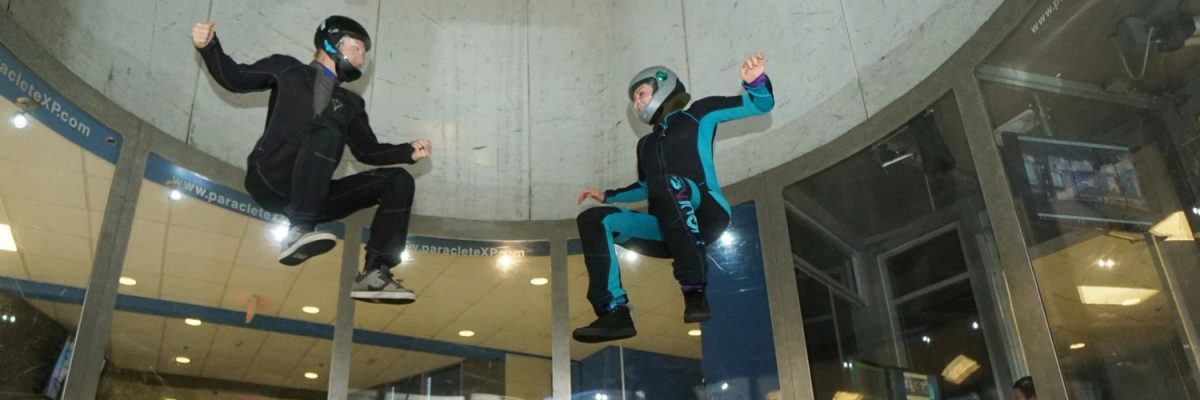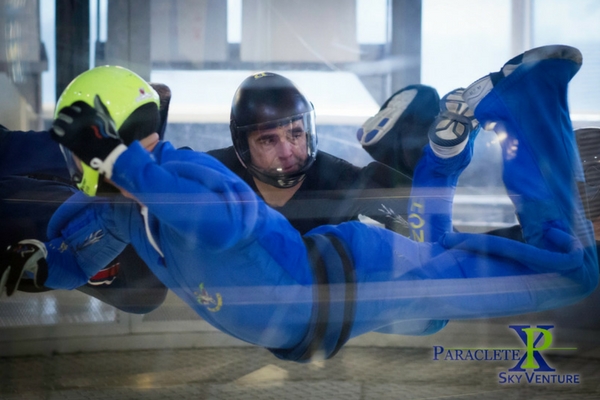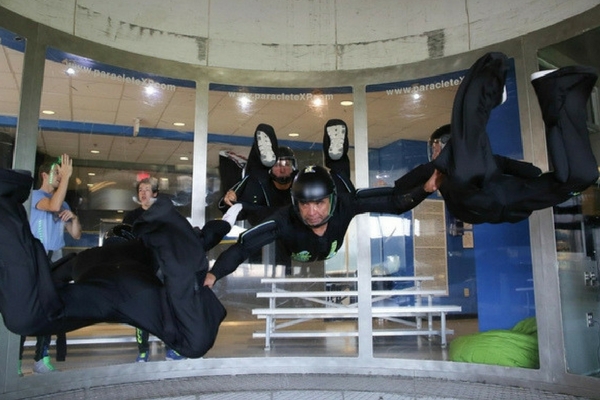
4 Tips & Tricks For the Wind Tunnel
Monday, July 30, 2018
- Team XP
- 7/30/18
- 0
- Indoor Skydiving
If you’re a five-year-old visiting the “indoor skydiving” wind tunnel for a birthday party, it doesn’t matter if you do well or badly. Right? You’re just in there to spend a jolly few minutes of bliss before heading over for the imminent cake and ice cream.
If you’re a grown-ass adult and you have your gaze set firmly on skydiving glory, heading into that tunnel is a far different prospect. The pressure’s on, y’all. The seconds are ticking down. Gotta get it gotta get it gotta get it.
We’re certain that we’re not the first people to shake a shaka at you and tell you to relax. After all: for all the “getting good” we do in here, at the end of the day it’s about having fun. With that as the foundation of our advice, let’s buildst a little detail around it, shall we? Here are our favorite tips and tricks — signposts along the most efficient route to tunnel greatness.
Level-Up #1: Nailing Your Arch
 Doing a stable arch is much like pedaling down the middle of the road for the first time on a bicycle without training wheels: the first time, it’s damn hard. It just gets easier once your brain starts to build the right connections.
Doing a stable arch is much like pedaling down the middle of the road for the first time on a bicycle without training wheels: the first time, it’s damn hard. It just gets easier once your brain starts to build the right connections.
The ‘arch position’ is the cornerstone of bodyflight. It’s the first thing you’ll be asked to do in the airflow; the first position you’ll achieve without your instructor’s firm hand on your grippers. Because demonstrating a good arch is the indicator that you’ve figured out how to be aware of the air, it’s no wonder that it’s such a massive trip-up for most new tunnel flyers.
First: be patient. Second: arch from the right place. Many new flyers arch from the chest, which is incorrect. You need to arch from the hips. You can think of it like you’re standing a step back from a big glass wall, trying to make an impression of your belly button on it. To do so, flex your butt and push out your hips. (Note: Nobody will be able to tell you’re madly flexing your butt.)
Level-Up #2: Just Float
Once you have the general shape, you’ll be able to tell because you’ll suddenly be stable and able to fly looking straight ahead. The trick now is to stop flexing your butt like your life depends on it. The trick now is to, simply, float.
Relaxing in the airflow is the key to literally everything you’ll do in there. It’s also the hardest part to master in any move, maneuver or body flight position. In a belly-to-earth arch, try to imagine that the tunnel is a giant fish tank and you’re floating on the surface of the water. Your chin will be up, naturally; your shoulders will be squared; your legs will be extended long and lissome behind you, as you use the pressure on the tops of your feet to calibrate yourself. (Pro tip: You can even feel this out in the public pool and transfer the sense memory into the tunnel.)

In much the same way, parts of your body will want to “sink” and you’ll need to keep them in position, but you can’t do so by kicking or making any sudden moves. Just as in a swimming pool, you’ll adjust them by moving them gently into place. If you fight the water in a pool, you’ll go under ungracefully; if you fight the air in the tunnel, you’ll fly into a wall, or the net, or your instructor.
Level-Up #3: Think Small
When you fly in the tunnel, no matter how rockstar you are, you’ll constantly make adjustments. The difference between the adjustments of a tunnel pro and a tunnel n00b are in the subtleties.
The trick is to make the smallest adjustments you can. Working ever so slowly and incrementally towards the perfect body position will, perhaps surprisingly, get you there faster than making big adjustments that cause you to lose control. Move as slowly and as centimeter-by-centimeter as you can.
Word to the wise: Choosing an unmoving point to fix your gaze upon can help you “go inside” and feel what the wind is doing as you slowly, minutely adjust. Just make sure you’re able to see your instructor’s signals in your periphery.
Level-Up #4: Invest In Yourself
Anyone will tell you that tunnel flying is like a any other worthwhile activity in the world: the more time you invest in it, the better you’ll get. Tunnel flying is expensive. But, it’s also one of the most satisfying, balletic, inspiring things you can do with your free time.
 Tunnel flying does not get easier over the passage of that time. Not in the classical sense. If anything, it gets harder, as you’ll be advancing ever closer to the event horizon of what is actually possible given the constraints of physics on our planet. Over time, though, you’ll become more experienced, more comfortable, and therefore more relaxed. You won’t need as much muscle power to move in the air. Your body will attenuate to an ever-changing 3D environment. You’ll stop overthinking and start feeling how the wind strikes each individual surface and confluence of your body. There’s an easy way to tell when you are advancing in this process: You’ll start smiling a lot more, both in and out of the tunnel. And, someday, you’ll have a few tips and tricks of your own to share.
Tunnel flying does not get easier over the passage of that time. Not in the classical sense. If anything, it gets harder, as you’ll be advancing ever closer to the event horizon of what is actually possible given the constraints of physics on our planet. Over time, though, you’ll become more experienced, more comfortable, and therefore more relaxed. You won’t need as much muscle power to move in the air. Your body will attenuate to an ever-changing 3D environment. You’ll stop overthinking and start feeling how the wind strikes each individual surface and confluence of your body. There’s an easy way to tell when you are advancing in this process: You’ll start smiling a lot more, both in and out of the tunnel. And, someday, you’ll have a few tips and tricks of your own to share.
Copyright © 2025, Paraclete XP Indoor Skydiving, All Rights Reserved.
DropZone Web Design & Marketing by Beyond Marketing, LLC
